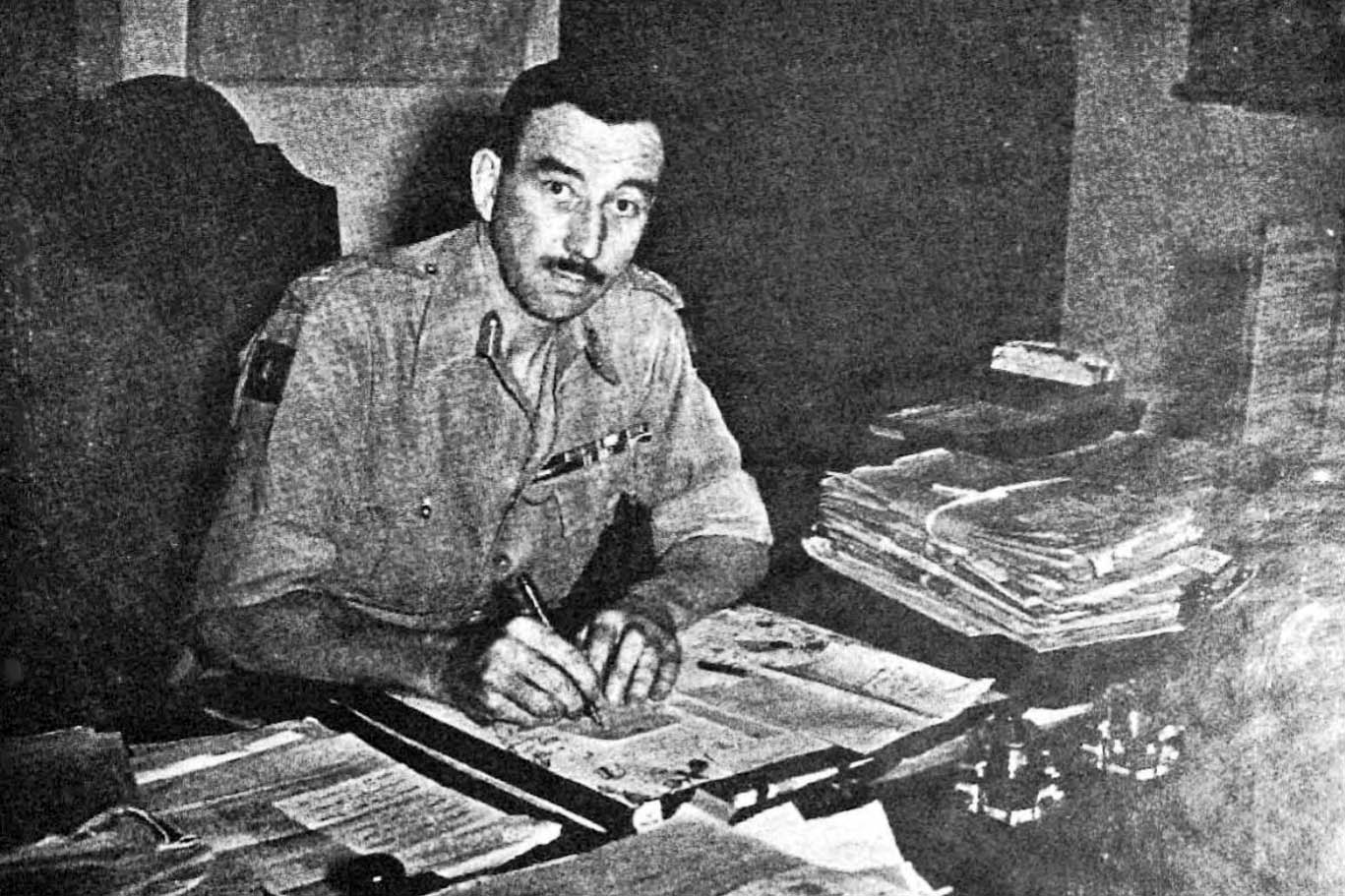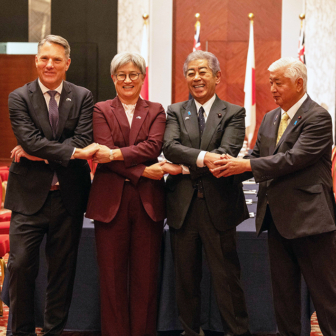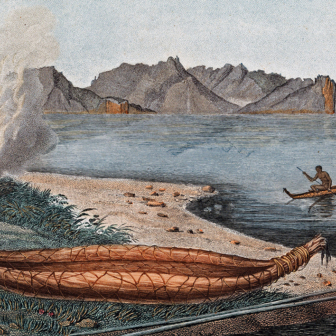The idea of the “Australian Briton” was central to the nation’s identity for nearly 200 years, joining Australian life to a love of Britain and its empire. That Anglophile Scot, Sir Robert Menzies, proclaimed he was “British to the bootstraps,” and many Australians of his generation walked proudly in the same boots. The feeling was especially strong among the “good chaps,” those men who knew the world for all its dangers but could be relied on to “do the right thing,” no matter how dirty the job.
Having created the Australian Secret Intelligence Service, our own overseas spy service, the good chaps set about serving the nation while breaking the laws of other nations. The dichotomy was crammed into a single sharp sentence by one of the architects of Australia’s intelligence community, Justice Robert Hope: “In all cases, espionage is illegal and the clandestine service’s job is to break those laws without being caught.” The tensions in the task have seen three ASIS leaders sacked since operations began in 1952.
The spy service’s troubled early life meant it risked being strangled before maturity. Several Australian Britons did good-chap duty cementing its existence, especially the external affairs minister, Dick Casey, and the third ASIS director-general from 1960 to 1968, Walter “Bill” Cawthorn.
Cawthorn had an extraordinary life as an Australian Briton. A digger at Gallipoli, he joined the British army and reached the rank of major-general, ran intelligence for four countries (Britain, India, Pakistan and Australia) and served as an Australian ambassador. Cawthorn’s life as an “intelligencer” — bringer of news, secret agent, spy — is the lens used by journalist, writer and ex-diplomat Alan Fewster in his account of the life, Intelligencer: The Secret World of Walter Cawthorn, Australian Spymaster.
Born in Melbourne in 1896, Cawthorn was a junior cadet instructor, training as a teacher, when war broke out in 1914. After he joined the Australian Imperial Force he was quickly promoted to sergeant, sailing for Egypt in May 1915 and then embarking in September for Anzac Cove. Cawthorn’s diary describes his introduction to Gallipoli:
Long before we saw any sight of land, we could see searchlights flashing & the occasional flash of a gun. As we got close in we could see the hospital ships — all lit with green lights, with a big red cross and also a big warship in the distance. It was about 12 midnight when we dropped anchor and we could hear the bullets going. We transferred to a big barge lashed to a tug at about 2 a.m. and did not get on to land till about 4 a.m. A more awful 2 hours I never spent — weighed down with equipment — about 500 men where there was only room for 200, made the discomfort simply terrible. The barge rocked forward very much so that it was only by the exercise of great determination that I was not sick.
Fewster’s chapter on Gallipoli is a vivid account of the birth of an Australian military legend through the eyes of one soldier. After an afternoon swim on his first day, Cawthorn walked the beach to see for himself all the work done since the first Australians had landed five months before: “Whole hills had been terraced and cleared of shrub. And roads made spiral-wise up the slopes. No wonder those that are left are just about tired to death.”
Cawthorn’s battlefield home was a ready-made dugout caused by a Turkish shell: “It has a sheet of tin roofing over the top and it’s quite roomy.” He dreaded having to lead a burial party into no-man’s land between the trenches at Lone Pine: “You have to crawl out on your hands and knees and try to locate the dead, then secure their disks or pocketbook, scrape a hole and bury them — all in perfect silence.”
Death came without warning. A man was shot through the head while looking over the parapet of the trench one afternoon. “A shell burst and he looked over to see the dust fly, when a sniper got him,” wrote Cawthorn. “Made us all feel rather gloomy for a while, but the occurrence was soon forgotten. It is awful to see a man killed in this way, but we are all used to it now, and the compassion soon dies away.” Despite some superiors’ worries about his youth, the nineteen-year-old earned a battlefield commission as a lieutenant.
After the evacuation from Anzac Cove, Cawthorn’s battalion deployed to the Western Front. In June 1916, a fortnight after his twentieth birthday, the young soldier was invalided to London after suffering a gunshot wound to his abdomen. Cawthorn missed his battalion’s first major action at Pozieres, during which twenty-seven officers and 656 other ranks were killed or wounded.
Army life suited Cawthorn and he made it his career. Having decided the opportunities would be more plentiful in the British army, the Australian Briton resigned his commission as an Australian captain to become a lieutenant in the British Indian Army. The decision “changed the course of Bill’s life,” writes Fewster, “setting him on a path he would follow for the next fifty years: the shadow world of intelligence and espionage” — at first for Britain and then in India, Pakistan and Australia.
Cawthorn was one of India’s delegation to the 1946 conference that established the United Nations. Such was his knowledge of the North-West Frontier that the new government of Pakistan “trusted him to negotiate what ultimately became the de facto border with India, which remains in place today. As Deputy Chief of Staff of the Pakistani Army, Cawthorn created the Inter-Services Intelligence bureau, which grew from an empty room with packing cases for desks into one of the world’s most powerful and feared intelligence organisations.”
However glittering the career, an Australian Briton was still branded on the tongue, as shown by this observation from a British diplomat in 1947: “I was able to speak very frankly to Cawthorn because, although he is an Australian, he is well known to be a particular friend of the United Kingdom, and a man of great discretion and tact.”
Cawthorn and his wife returned to Melbourne in 1951, buying a house near Kallista in the Dandenong Ranges, an area “popular with retired members of the Indian army and civil service, who liked the cool temperate climate, which reminded them of Raj hill stations.”
The Australian Briton stamp put him in good stead at the Melbourne Club and with other good chaps such as Menzies and Casey. Cawthorn was a child of “the crown and empire generation,” Fewster observes. “[A]lthough he was not born into the officer class, he had the bearing of a pukka sahib,” with the moustache to suit.
A fellow good chap, Walter Crocker, described Cawthorn’s ambivalence about returning to Melbourne: “He finds Australians ignorant and provincial but also arrogant and self-confident. There is hardly anyone any more who understands his interests, India, the officer sahib’s ways of life, the empire and so on.”
Crocker is an important witness who testifies frequently through the Intelligencer via his diary, a journal that is the gold biographers pray for as they sift to find the life. He was another eminent Australian Briton, had left Adelaide for Oxford and served in the British colonial service and the British army, had become the first professor of international relations at the Australian National University, and from 1952 spent eighteen years as an Australian ambassador, serving in eleven countries.
Cawthorn’s life as an intelligencer resumed when he joined the Melbourne-based Joint Intelligence Bureau, which tried to coordinate intelligence from Australia’s three armed services. But in a “series of meetings and lunches at the Melbourne Club” from mid 1953 into early 1954, “Casey sought to gauge Cawthorn’s suitability for a posting to his old stamping ground” as ambassador to Pakistan. And so, in 1954, Cawthorn returned to Karachi, back to the world he knew, as Australia’s high commissioner. Fewster headlines this chapter, “More a Pakistani than an Australian.”
No longer a senior officer at the centre of the headquarters action, Cawthorn waged long-distance fights for attention from External Affairs, which saw him as an outsider, and for resources from a public service board he found ignorant and dilatory.
Crocker, who was serving as high commissioner in New Delhi, recorded Cawthorn’s anger at the “supreme ineptitude” of Australia’s diplomatic service, and the frustrations of being a diplomatic bag-carrier for visiting Australians. Our man in Karachi complained about “the plague of visitors” and the “outrageous behaviour” of “ordinary Australians, especially politicians” who would telephone from the airport “at any hour of the day, seeking accommodation, or to be met.”
Cawthorn served the system well enough to be knighted in 1958, and the following year he was posted as Australia’s high commissioner to Canada. The postings meant he observed “from a safe distance the turmoil that was the Australian intelligence community in the mid-to-late 1950s.” ASIS was “reviled by its two most important clients, External Affairs and Defence,” Fewster writes, “morale was at rock bottom” and the spy service was “in a fight for its survival.”
In 1957, Australia’s senior ministers and officials had decided to kill ASIS. British and American spy agencies pushed hard against the closure. MI6, the British Secret Intelligence Service, sent its deputy chief to do the rounds in Canberra and “managed to convince Casey that Australia ought to stay in the business of secret-intelligence and counter-subversion.” Casey didn’t need much convincing. Unlike those of his senior diplomats who distrusted the spies, Casey was always interested in what he called “the dirt boy stuff,” the espionage he defined as “bribery, deception, whispering and underground methods generally.”
After only a year as high commissioner to Canada, Cawthorn returned to Melbourne in 1960 to take over at ASIS headquarters in Victoria Barracks. The public reason for his short Ottawa stint was poor health, a cover story that had some truth — he’d had a heart attack, suffered from phlebitis, and took three different drugs every day.
Crocker’s diary records his view of the good-chap qualities that suited his friend to run the spies, judging that Cawthorn had “the honesty to be entrusted with a secret service but has he the safe intellect?” If Australia must do espionage, Crocker mused, the job could be entrusted to Cawthorn because “his old fashioned Christianity and Anglicanism, and his utter decency and his never-give-up plodding more than compensate for his slowness and over-simple judgement of men and situations.”
The question of “who will watch the watchmen?” was one the two friends returned to near the end of Cawthorn’s eight years running ASIS. Crocker recalled expressing a dislike of the “espionage approach” and doubts about the value of the “peep-hole view in international relations” during an after-dinner conversation in 1968; Cawthorn responded by saying that ASIS should not report on current facts and appearances, as done by embassies, but discern the long-term trends:
When Crocker made clear his fears about “huge, powerful” secret services, “more or less above the law, as well as in the dark,” Cawthorn replied that Australia would not have such a service, and in any case “we must be able to count on integrity and balance in the operations.” Cawthorn thought that a profession in which “duplicity, concealing your true feelings and of leading people up the garden path” did not normally “warp the practitioners.” Croker said he found that proposition hard to accept.
When Cawthorn took control in 1960, ASIS had overseas stations in Jakarta, Tokyo and Dili, with a presence in the MI6 stations in Hong Kong and Singapore. In the two years after Harold Holt inherited the prime ministership from Menzies in early 1966, ASIS achieved its biggest expansion of posts, opening stations in Manila, Rangoon, Bangkok and Saigon.
Cawthorn gave his life to his work. Two years after leaving ASIS, he died of a heart attack while waiting for a massage at a health club around the corner from the Melbourne Club.
Fewster makes proper use of the definitive book on the early decades of the spy service, Brian Toohey and William Pinwill’s OYSTER: The Story of the Australian Secret Intelligence Service. (“OYSTER” was a codeword stamped on ASIS material.) Fewster’s work shares with OYSTER the scars of legal battles with government. Where Toohey and Pinwill had to fight to defend what they’d written, Fewster’s struggle was to get the documents he needed from ASIS.
OYSTER was “subject to censorship by the government,” Toohey and Pinwill noted, because the Federal Court had ruled that any material about ASIS must be vetted by the government before its release. Their final text had to be negotiated with ASIS and Foreign Affairs officials. Toohey and Pinwill wrote that a “sensible and professional” negotiation meant only “one major deletion” from the text, a passage identifying an Australian public relations firm that provided cover for ASIS agents in Asia. (After the first edition OYSTER, another journalist, Robert Haupt, revealed that the firm that aided ASIS was Eric White and Associates, established by a former director of public relations for the Liberal Party.)
Fewster’s battle took place in the Administrative Appeals Tribunal. When he started researching the book in 2018, virtually no ASIS records appeared in the National Archives catalogue. Fortunately, Fewster’s close reading of the 1977 royal commission report on the intelligence services revealed references to a document on the organisation’s internal history submitted by ASIS. Fewster targeted that history using the Archives Act, only to be opposed by ASIS at every step. As Fewster told me:
Senior and former officers from ASIO, DSD, Defence and DFAT, as well as the former director-general of ASIS, Major-General Paul Symon, appeared before the tribunal to argue why I should be denied access to the history. On security grounds, neither my lawyer nor I were allowed to hear the arguments made by these officials to the AAT. I could not justify on grounds of cost, or the time involved, an appeal to the Federal Court. For its part, ASIS was itself beginning to open up its records. As the years progressed, I began to find on the Archives website files which were still the subject of action by me in the AAT. Eventually, in 2024, the Tribunal gave me access to the history, albeit heavily redacted. By then, it was online.
The secret world is oyster-like in clamping hold of its secrets, but some pearls escape.
Fewster’s book illustrates the evolution of intelligence bureaucracy in the twentieth century as lived by an unusual Australian. While spies operate beyond the law on behalf of government masters, their cloak-and-dagger machinations are ruled by the need to feed the files. As Cawthorn warned an army officer he was trying to recruit: “In ASIS you’ll spend most of your time behind a desk.”
Credit Alan Fewster for his writing mission, sense of history and archival persistence. Or as he puts it himself in the last sentence of his acknowledgements: “Finally, my thanks to the Australian Secret Intelligence Service for supplying the cover photograph [of Cawthorn] and, grudgingly, some redacted files dealing with ASIS history.” •
Intelligencer: The Secret World of Walter Cawthorn, Australian Spymaster
By Alan Fewster | Australian Scholarly Publishing | 276 pages | $49.95




